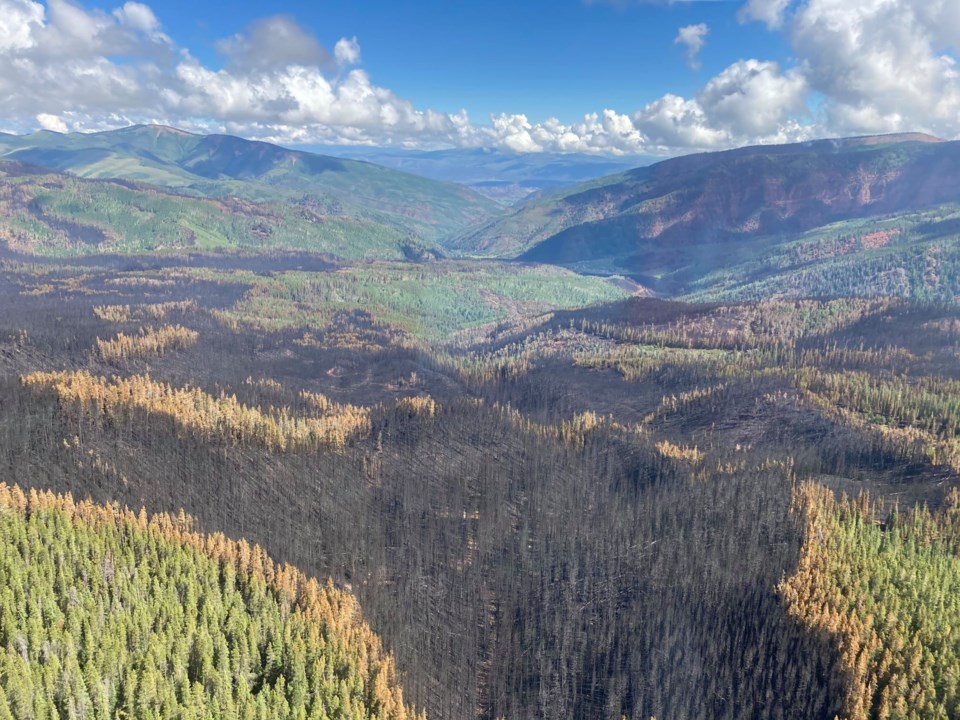Warm, dry weather returns this week in Colorado which will make work difficult for firefighters looking to further contain the 12,613-acre Oil Springs Fire, the largest wildfire in the state.
The fire — located 20 miles south of Rangely — is now 30% contained and there have been no evacuation orders issued as of Monday, according to the Bureau of Land Management, or BLM.
Temperatures are expected to remain in the upper 70s and upper 80s today through Thursday with relative humidity values dropped between 20-30%, the BLM stated. Clouds are expected to drift into the area through the week along with sprinkles. The chance of wetting rain remains low, the BLM said.
The Muddy Slide fire, near Kremmling, has burned 4,093 acres and is 14% contained. The area of containment is located along County Road 16 on the eastern side of the fire as in the area of the Muddy Slide, according to the U.S. Forest Service. Once newly constructed fire lines are tested by increased temperatures and winds, fire managers may increase the amount of containment reached, the Forest Service said.
A virtual community meeting will be held via the Muddy Slide Facebook page (https://facebook.com/MuddySlideFire) on Wednesday, June 30 at 5 p.m.
The size of the Sylvan Fire near Eagle has remained constant at 3,775 acres for the past few days. Containment has increased over the past three days and is at 27%, according to the U.S. Forest Service.
More rain is likely over the next several days and fire managers are considering moving some firefighters off the ground “to right size other parts of the fire organization,” the Forest Service said.
Fire officials say fire restrictions are still in place throughout the Sylvan Fire area. “Please do everything possible to avoid starting new fires as we head into the peak of the wildfire season,” the Forest Service states.


.jpg;w=120;h=80;mode=crop)
